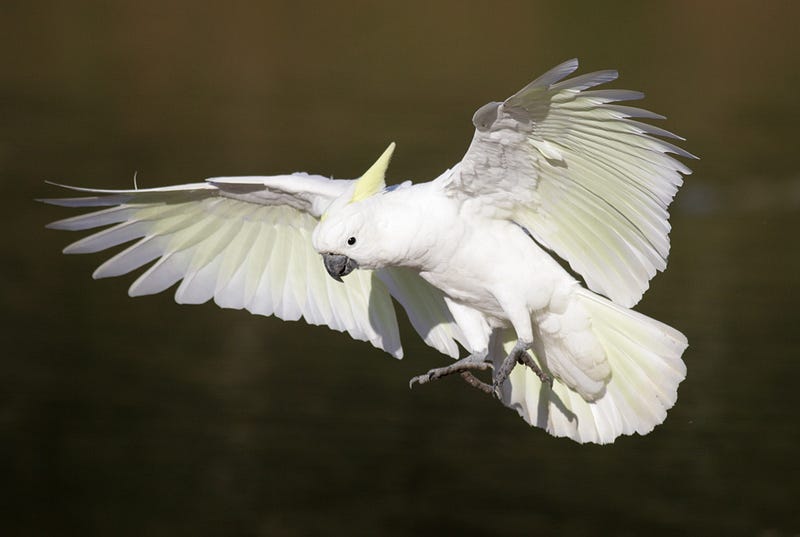Innovative Cockatoos and Sydney's Trash Wars: A Study
Written on
The Great Bin Battle
In Sydney, Australia, a fascinating scenario is unfolding as sulphur-crested cockatoos (Cacatua galerita) have mastered the skill of opening household rubbish bins to scavenge for leftover food. This behavior, which includes tossing trash onto the streets, has become a part of a burgeoning "dumpster-diving" culture among these clever birds. Unfortunately for the residents, this has prompted them to devise various strategies to safeguard their bins from these crafty avian thieves.
"It’s moves and counter-moves, and it’s all we gotta look at."
—Plutarch Heavensbee in The Hunger Games: Catching Fire by Suzanne Collins (2009)
As these cockatoos rummage through the bins, they have left a trail of litter in their wake. The situation has escalated, leading humans to implement a range of protective measures, from bricks and pool noodles to more sophisticated contraptions. The intention is to prevent the cockatoos from accessing the rubbish while still allowing the bins to be emptied by garbage trucks.
The effectiveness of these protective devices varies widely. Simple deterrents, like placing a rubber snake on the lid, tend to fail, while heavier items such as bricks only momentarily hinder the birds. More innovative solutions, however, have shown promise.

Anti-bird spikes are one example of a device designed to stop cockatoos from flipping open the lids of wheelie bins (Credit: Barbara Klump, Current Biology 2022).
Barbara Klump, a behavioral ecologist at the Max Planck Institute of Animal Behavior, noted, "When I first started investigating bin-opening behavior, I was astonished by the variety of strategies people have created to protect their bins from cockatoos." This observation sparked further research into the behavior.
However, the intelligent cockatoos are not standing still; they continuously develop new tactics to counteract the increasing complexity of human-made bin protection devices. This dynamic has led to a keen observation by residents, who often mimic their neighbors’ successful strategies.
Human Adaptation and Behavioral Change
The ongoing conflict over rubbish bins in Sydney serves as a prime example of cultural evolution, illustrating how learned behaviors can change in both species. While Dr. Klump and her team initially focused on the cockatoos, they also sought to understand human responses to this ongoing challenge.
To that end, they examined 3,283 wheelie bins across four suburbs in Sydney, documenting 52 different deterrent techniques. They discovered that the effectiveness of these methods varied significantly, ranging from 0% to 50%.
The first video, "WION Climate Tracker | Cockatoos in 'arms race' with Australians over rubbish bins," provides a visual overview of this fascinating interaction between humans and cockatoos.
Dr. Klump's team found that when bins are located close to one another, they tend to feature similar protective measures, suggesting that residents are learning from one another. Their survey of 1,134 Sydney residents revealed that 64% of those who implemented bin protection strategies drew inspiration from their neighbors, with 60% directly copying methods used nearby.
The second video, "Cockatoos are in a 'cultural arms race' with Sydney residents and their bins," further explores how both species adapt and evolve in response to each other's behaviors.
The survey results also indicated that 61% of residents reported escalating their protection methods over time, often as a direct response to the cockatoos' cleverness. As one participant noted, "Bricks seemed to work for a while, but the cockies got too clever. Neighbors on the other side of the highway suggested sticks. They work."
The findings highlight the remarkable capacity for both humans and cockatoos to learn from each other in this ongoing battle.
Cockatoos as Cultural Innovators
This research challenges the long-held belief that culture is a uniquely human trait. As Dr. Klump pointed out, many animals, including whales, chimpanzees, and parrots, demonstrate similar learning capabilities and local traditions.
With plans to start her own research group at the University of Vienna, Dr. Klump aims to further investigate how urban cockatoos will adapt to the increasingly sophisticated bin protection methods developed by humans.
"As cities expand, we will encounter more interactions with wildlife," Dr. Klump remarked, emphasizing the importance of fostering understanding and tolerance for the animals that share our urban environments.

Source:
Barbara C. Klump et al. (2022). "Bin-opening and bin-protection in cockatoos and humans: beginnings of an inter-species innovation arms race?" Current Biology. doi:10.1016/j.cub.2022.08.008
Originally published at Forbes.com on 13 September 2022.